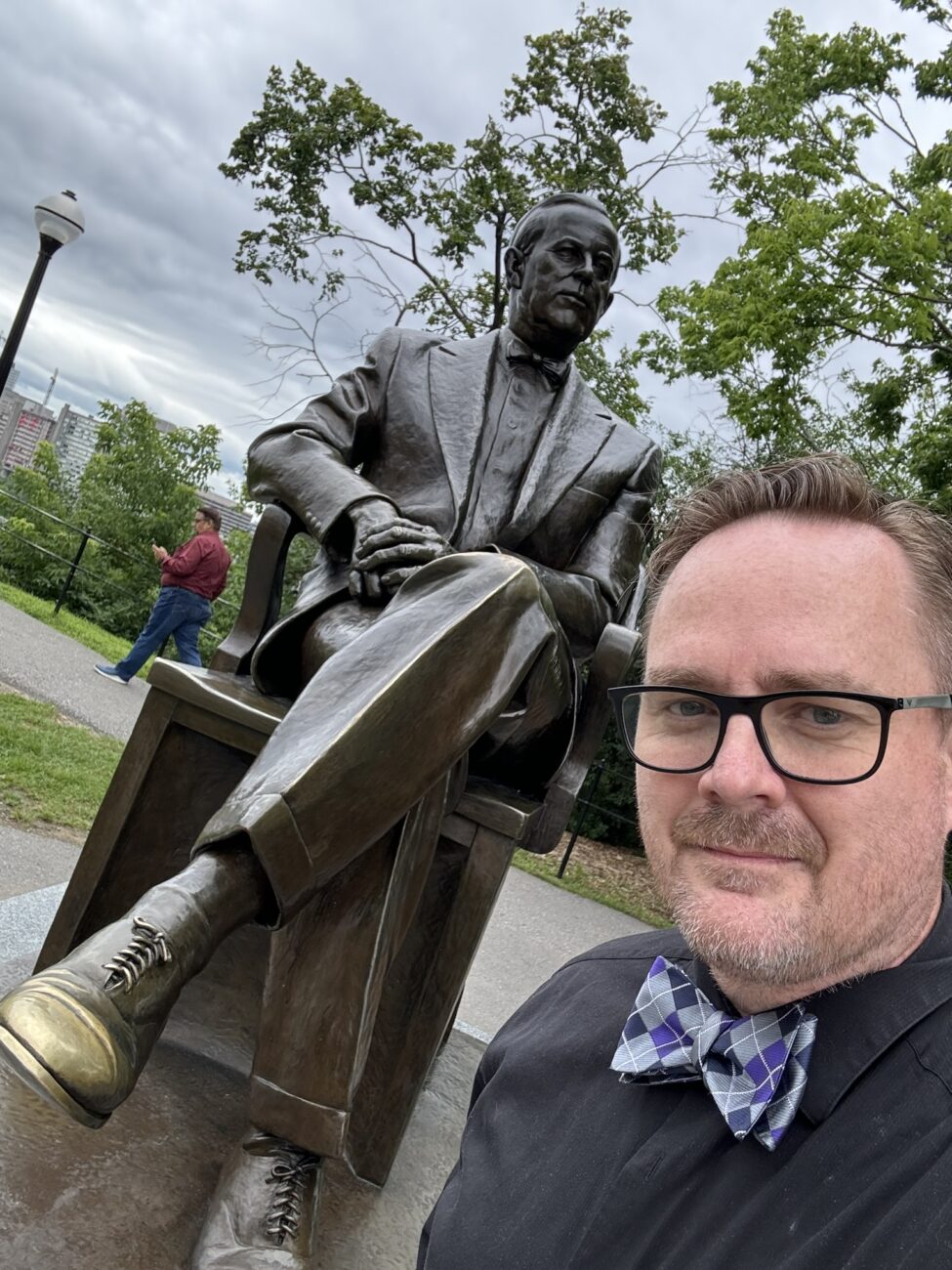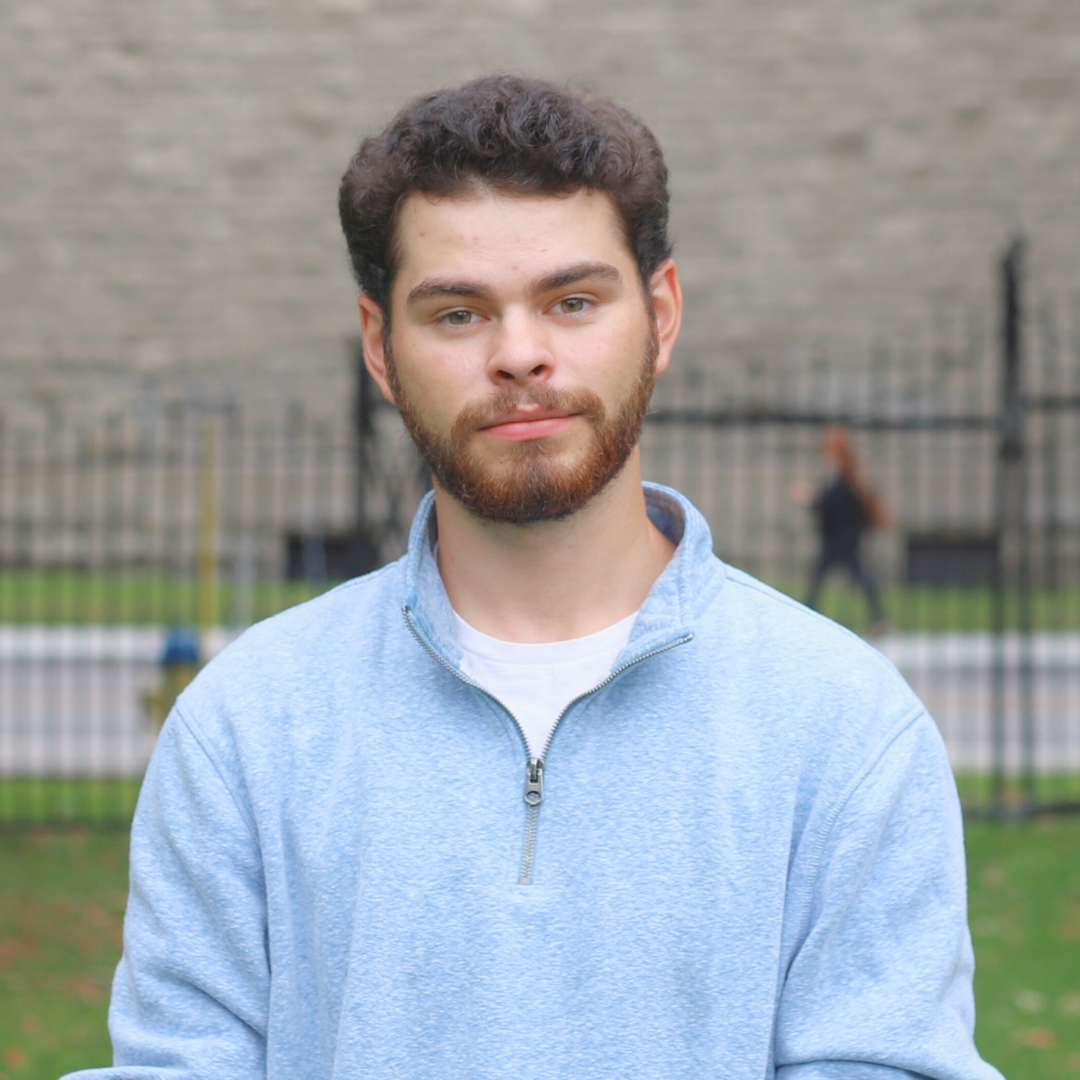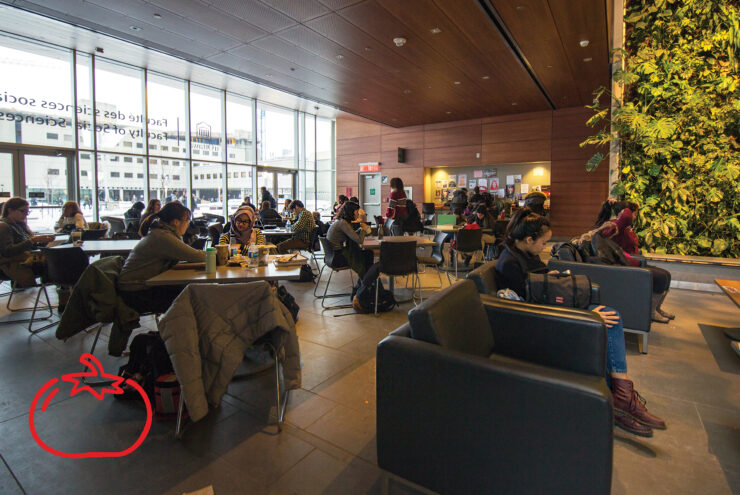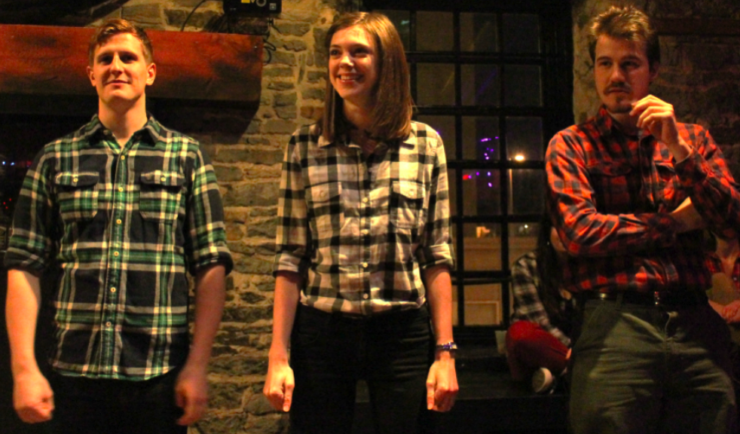“Everything changed on March 31, 2023”
Before the internet and social media, Canadians learned about history through physical sources like libraries, encyclopedias, books, or what they could retain from school history classes and documentaries. Nowadays, the ways in which we can pick up knowledge have vastly improved, and include internet forums, podcasts, and social media posts.
In mid-July, the Fulcrum got the opportunity to sit down with a Canadian historian, Craig Baird, who is at the forefront of the transition towards these new sources of knowledge. Baird may be better known on Twitter as “Canadian History Ehx”, his display name which puts a Canadian spin on the 1998 crime drama film American History X.
Baird’s account on Twitter — now with over 50,000 followers — dates back to October 2009, but he explains that it took more than a decade for it to become popular. “Everything changed on March 31, 2023,” said Baird. March 31 was the day that Baird used AI to depict Canadian prime ministers as hair metal singers in an attempt to get people interested in Canada’s history, to great reception.

“My account blew up at that point,” explained Baird. “I went from like, 2,000 [followers] to like, 15,000 followers. It just kept going after that.” Baird had been producing his podcast Canadian History X since 2018 and said that before March 2023, he mainly just used the account to promote new episodes, with only the odd attempt to push out other Canadian history content on Twitter.
But after that, Baird had found an audience on Twitter who enjoyed the fun, informative bits such as the hair metal prime ministers. This past December, Baird began a massive project of posting daily polls in which users could vote on “Canada’s Greatest Song.”
Baird explained that it wasn’t his first foray into social media polls, but now that he had a larger audience, they took off. “I had kind of done polls before that,” said Baird, “I did a ‘Greatest Canadian’ poll, but the problem was there were like, 50 people voting, versus [“Canada’s Greatest Song”], where there were two to five thousand people voting.”
Baird explained that he still posts occasional AI-generated content, but creates polls consistently because people like it, but also because “it touches a bit on — in this case, pop culture history.” In an all-Gordon-Lightfoot final, Twitter and Threads users eventually chose “Wreck of the Edmund Fitzgerald” over “If You Could Read My Mind” in late May.
After the success of that contest, Baird began his next poll, “Canada’s Favourite TV Show,” and divulged that his next planned contest was based on Canadian inventions. “It’s a quick way to get people learning about Canadian history,” said Baird, noting that the increased engagement also helps him get people to listen to his podcast.
From computer science, to journalism, to history
Baird was interested in history from a young age and said that growing up he wanted to be an archaeologist. “I had always been interested in history,” said Baird. “It was always something I read, [I] watched documentaries [and was] doing computer work.”
But Baird entered university during the dot-com bubble “when the internet was huge.” After completing his degree and working as a computer scientist — a job he found stressful — he started working in small towns, first as a sports reporter.
“Being paid to watch hockey was huge,” said Baird. “Before, I’d been building networks for diamond mines, and it was stressful.” Baird agreed that there were strong parallels between sports journalism, journalism in general, and history.
“You’re either trying to become an expert in something very quickly, or you’re interviewing people; you’re building stories. The only difference is that I’m building stories that are long gone — whereas, with journalism, you’re building stories as they happen — but still, you have to pick out the things that people are going to find interesting … people have to relate to the story that you’re writing, whether it’s sports, or human interest, or city hall, or whatever it may be.”
Baird said that it was when he was an editor in various small town newspapers that his journey towards documenting history really began, explaining that he would go through old newspaper archives and pick out different stories to write about weekly in his own newspaper.
“People really liked those,” said Baird. “It was really showing me that ‘oh, people like this history stuff depending on how you present it to them.’” That interest led to Baird starting to play around with podcasts and videos in Regina.
The beginning of Canadian History Ehx
A longtime podcast listener, Baird had been listening to various genres of podcasts for more than a decade when he launched Canadian History Ehx in 2018. Baird explained that he doesn’t listen to a lot of other Canadian history podcasts because he spends so much time with the material firsthand.
Baird listed survival podcasts, for example, stories of people surviving plane crashes, comedy podcasts such as Graham Clark and Dave Shumka’s Stop Podcasting Yourself, advertising podcasts like Terry O’Reilly’s Under the Influence, but also history podcasts such as Kathy Kenzora’s History of the 90s and Dan Carlin’s Hardcore History as examples of his taste.
After producing about 400 episodes of his podcast, Baird finally got his break when CuriousCast, Corus Entertainment’s podcast network contacted him around July 2022. Baird noted that the network originally inquired about a collaboration before offering Baird a place on their network.
“I couldn’t figure out why I wasn’t getting picked up by a network,” mused Baird. “There’s lots of independent networks — and they do great work — but, you know, it is everybody working together in those cases. And I was looking for something like a larger network that could really boost everything.”
Baird said the offer was a “reassurance” of what he was doing, because a company of that size was interested in his work. “At that point, I was able to finally make a complete living off podcasting and social media.”
Baird’s portfolio of podcasts now includes completed series like Coast to Coast, which deals with the history of Canada’s transcontinental railroad; Pucks and Cups, which talks about Canada’s rich hockey history dating back to before the National Hockey League even existed; and Canada’s Great War, a Canadian point-of-view on World War I.
Baird’s podcasts still in production include Canada: A Yearly Journey, which notably assigns one year of Canadian history to an episode dating back to confederation; From Justin to John, in which each episode talks about a specific figure in Canadian history; and, of course, Canadian History Ehx, which Corus began broadcasting on radio this past October.
A Canadian History Education
Born in Calgary, Baird spent some of his childhood in British Columbia’s Okanagan, but most of it on a farm acreage south of Stony Plain, A.B, just west of Edmonton. Baird, an only child, noted that growing up in the 1990s meant having three television channels to choose from, and access to the internet through a computer program rather than a browser.
“I read a lot,” said Baird. “I spent a lot of time on my own, and everything like that. I started watching documentaries, and things like that, I’d go through history books.” But growing up, Baird was more interested in ancient history. “It wasn’t until a little bit later in my teens that I started getting into actual Canadian history.”
Baird explained that out west, his history education was much different than a student from the east, and that due to the vast size and regional differences of the country, the curriculums for students seemed to be very different. “I didn’t learn about anything east, except for maybe the Plains of Abraham,” said Baird.
For a student in Alberta, that education included the history of the transcontinental railroad, the North-West Resistance, and Louis Riel (who was portrayed as a traitor), though he explained his 20th-century education mostly focused on the Cold War.
“By the time we got to about high school, I had already been reading a lot of Canadian history, so what they were teaching was getting a bit repetitive. It was like Cold War, Cold War, Cold War — every year.”
Baird spoke about a memory of an assistant gym teacher at his school who came in to substitute in history class. “I got into an argument with him,” said Baird, “because he said that Confederation happened from east to west, in that order. Baird pointed out that Newfoundland was the last province to join the country (in 1949), and that British Columbia was one of the first (in 1871).
Baird explained that by high school, he was starting to learn more things about Canadian history online and through history books — which he describes as very different from today’s.
“[The history books] were using colonial terms, it was very white man centric, versus now where you have a much broader approach, and that’s what I try to do with my podcast and my content. It’s been kind of learning history and adjusting to it from that early age for me, and adjusting how society is adjusting, and learning different aspects of our history.”
Sandy Hill: A hotbed of Canadian history
Baird — on his first trip to Ottawa since he was a six-year-old — noted that the visual history on display was much different than in Alberta, first, that there are many more brick houses in the east, versus the west’s inclination for stucco, and second, that there were many more statues.

I asked Baird about the role that the neighbourhood of Sandy Hill used to play in Canada’s history while noting that 10 prime ministers, including four sitting prime ministers, used to live here. Baird found similarities between Ottawa and Edmonton in this regard.
“Ottawa’s like a lot of other places where certain neighbourhoods have a great deal of history, even very early on. A good example is Edmonton, [the neighbourhood of Mayfield]. Nobody really thinks about why it’s called Mayfield, but it’s called Mayfield because a [World War I] flying ace named Wop May opened Canada’s first aerodrome there.”
Baird imagined a very similar circumstance was at play in Sandy Hill, and that many residents likely had no idea of the neighbourhood’s history. “One thing I found with the AI prime ministers was a lot of Canadians don’t even know 10 prime ministers,” chuckled Baird. “So that’s something I’m obviously trying to work against.”
“I think many cities like Ottawa, you know, there are certain areas that are always going to be a ritzier environment,” explained Baird, in reference to Sussex Drive and Rockcliffe Park in Ottawa, while noting that every community will still shift to different areas as a city expands, and that people have moved out of downtowns as suburbs began to be built.
“Back in the early 1920s, everybody lived downtown,” noted Baird, “but I can promise you that Connor McDavid does not live downtown [in Edmonton], he lives on the river now.”
Newfoundland, the Trans-Canada Highway, and a Stanley Cup Champion
Baird told me that his next trip was going to be to Newfoundland and that he had been wanting to see more of Canada — its east coast in particular — for quite some time. He also noted that a trip to Toronto was coming in August alongside an appearance at the Canadian National Exhibition.
I had also asked Baird if he planned to branch out into long-form content, specifically a book, in the future. He excitedly told me that he had just recently finished writing his first book, about the history and construction of the Trans-Canada Highway from 1950–1971. The book has been sent to his publisher for edits and production and could be out as soon as spring 2025, noted Baird.
Baird has also begun writing a book on “One-Eyed” Frank McGee, a Canadian hockey player who helped the original Ottawa Senators to three straight Stanley Cups from 1903–1906. McGee — nephew of Thomas D’Arcy McGee — grew up on Daly Street in Sandy Hill and served as a civil servant in the federal government before being mobilized for active duty in World War I and ultimately being killed in action during the Battle of the Somme.






